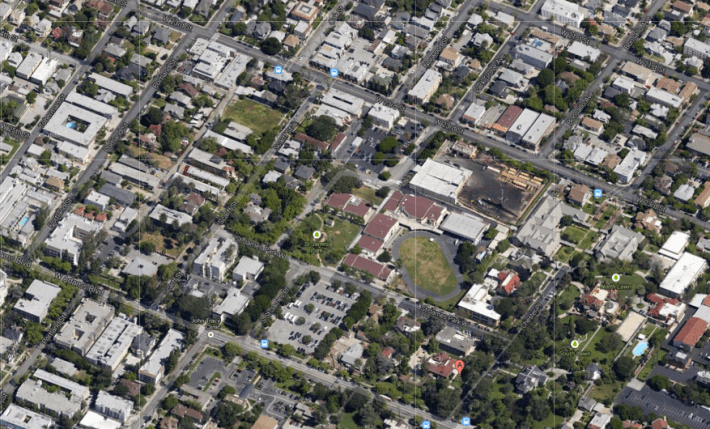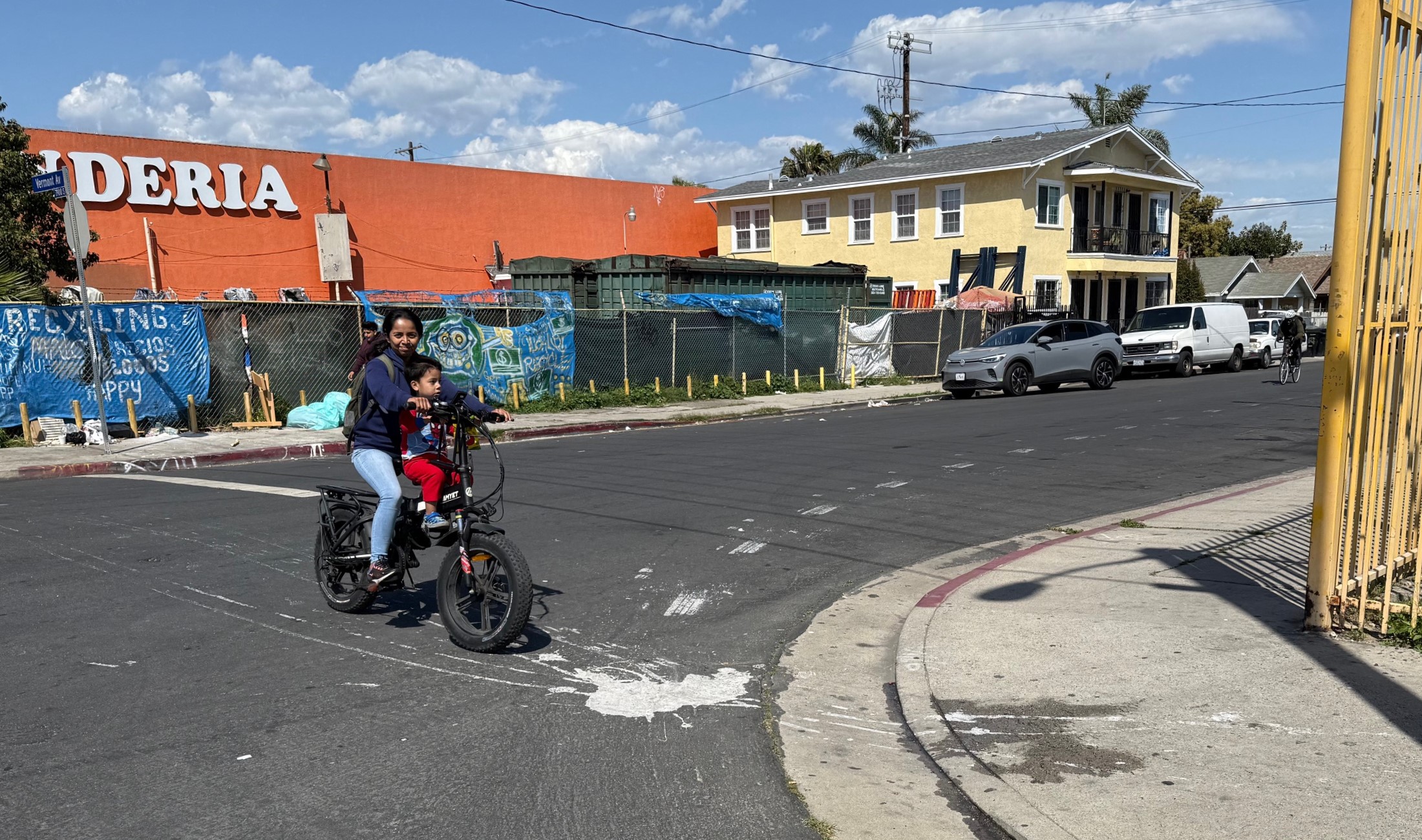
Standing at the gas pump, I was overcome with a sudden wave of dizziness and a blinding headache.
Because I only drive my car two or three times a year, putting gas in my tank is one of those typical LA past-times I am usually able to avoid. But on those rare occasions I do have to stop at a gas station, I am always shocked at the speed and intensity with which the gas fumes knock me on my arse.
"We really still have questions about the harm that can be done by fossil fuels...?" I asked my woozy self as I put the nozzle back in the pump.
My thoughts drifted to the active oil wells near USC (pictured above).
If I could barely stand to put three gallons in my tank, I wondered, how on earth were people dealing with living next door to a 2-acre oil field? Especially one where production had jumped by 400% to over 21,139 barrels in 2010 from 4,178 the year before?
As you might imagine, it hasn't been that much fun for them.
Over the past three years, residents have lodged 251 complaints with the South Coast Air Quality Management District (SCAQMD) about horrible odors, nausea, dizziness, headaches, nosebleeds, and respiratory ailments that they believe can be attributed to Allenco Energy Co.'s oil extraction activities.
And, lest anyone think their claims might have been exaggerated, several EPA officials that toured the facilities just this past October (in response to the complaints) reported being afflicted with "sore throats, coughing and severe headaches that lingered for hours," according to Jared Blumenfeld, EPA Regional Administrator for the Pacific Southwest.
"I've been to oil and gas production facilities throughout the region," Blumenfeld told the L.A. Times, "but I've never had an experience like that before."
While Allenco Energy Co. is not engaging in fracking at the University Park site, in 2005, it used acid stimulation to unplug several wells that had been shut down in the 1990s. The practice, which some worry may be more environmentally hazardous than fracking, facilitates crude oil extraction by "melting" rocks and other obstructions in wells with thousands of gallons of chemicals.
Because companies are not required to report when they engage in acid stimulation and there is no easy way to access information the companies do report, we don't know if the practice was behind the boost in production in 2010 or if chemicals other than hydrochloride and phosphoric acid have been used there. (Here's some more fun, light reading on chemical stimulation)
The only reference to specific chemicals a Times reporter saw when visiting the site consisted of a sign warning of exposure to hydrogen sulfide (H2S), a highly toxic compound. While prolonged or intense exposure to H2S can trigger many of the maladies reported by residents, it is usually present only in small amounts in crude oil and not released in problematic quantities until the refining process.
Given that Allenco is not refining on-site and that previous measurements of air quality seem to indicate H2S levels have been quite low, answers about what has been eating away at residents' health remain elusive.
Residents and activists alike are hoping they will find more clarity at tonight's town hall meeting hosted by the SCAQMD.
The agency has recently taken some heat from several environmental justice organizations who complain that the self-reporting of air quality measurements by oil companies the SCAQMD allows results in data that is vague, unverifiable, and largely useless. As things currently stand, they charge, the SCAQMD is "not capable of evaluating the full nature, scope, and magnitude of risk posed by exposure to harmful air toxics."
In the Allenco case, they argue, this meant that, even after fielding 251 complaints over a three-year period, the SCAQMD was so incapable of adequately monitoring air quality around the active wells that they were "unable to state definitively whether air quality was safe for residents" at the meeting this past October (see the full letter here).
SCAQMD has apparently since been on site to conduct measurements, and say they will provide town hall attendees with an update on air quality and odor issues.
They will also offer information about enforcement efforts, as Allenco's future in the area is still up in the air. Allenco voluntarily halted operations last month, pending the outcome of investigations into health claims, the validity of their operating permits, and the validity of the lease agreement they have with the Roman Catholic Archdiocese of Los Angeles for use of the land. But whether they will be asked to simply make safety adjustments or cap the wells altogether is still unknown.
If you'd like to hear the latest on the case and voice your own opinion, you are invited to attend tonight's town hall. It will begin at 6 p.m. in the Rose Hills Auditorium at Mount St. Mary's College (10 Chester Place, 90007).
For more information, please visit the AQMD's website.






